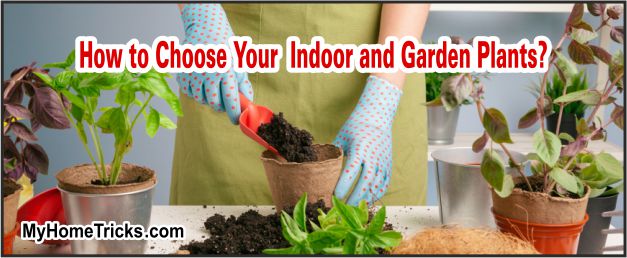Choosing and Buying Home Plants
Plants can be a great addition to any home or garden, providing not only aesthetic value but also health benefits. However, choosing the right indoor or garden plants can be a daunting task, especially for beginners. There are many factors to consider, such as the plant’s requirements for sunlight, water, and soil type. In this article, we will discuss how to choose the right indoor and garden plants. Also, using plant labels and avoiding poisonous plants.
Using a Plant Label:
When shopping for plants, it is essential to read the plant label carefully. The label will provide valuable information about the plant, including its name, growing requirements, and care instructions. It is also important to note the plant’s size and growth rate, as this will help you determine if it is suitable for the space you have available.
Buying Good Plants:
Choosing healthy plants is crucial to their long-term success. When selecting a plant, look for those with vibrant foliage, sturdy stems, and no signs of pests or diseases. Avoid plants with wilted or yellowing leaves, as these may indicate a lack of care or a problem with the plant’s root system.
Seasons:
Choosing plants that are suited to the current season can help ensure their success. For example, in the winter months, it may be best to choose plants that are tolerant of low light levels and cooler temperatures. In the summer months, plants that prefer brighter light and warmer temperatures may be more suitable.
Poisonous Plants:
Some plants can be toxic to pets or humans, so it is essential to research the plants you are considering before bringing them into your home or garden. Common poisonous plants include lilies, poinsettias, and oleander. If you have children or pets, it is especially important to avoid plants that can be harmful if ingested.
Choosing for a Specific Place:
When selecting plants, it is essential to consider the specific environment in which they will be placed. For example, if you are looking for an indoor plant for a low-light area, consider plants that are tolerant of shade, such as pothos or snake plants. If you are selecting plants for a sunny outdoor space, choose plants that thrive in full sun, such as petunias or marigolds.
When to Buy:
The best time to buy plants may depend on the specific plant and your location. In general, it is best to buy plants when they are in season and readily available. This can help ensure that the plant is healthy and has been well cared for. However, some plants, such as succulents, can be purchased year-round and are relatively low maintenance.
Watering and Care:
When choosing plants, it is essential to consider their care requirements. Some plants require frequent watering, while others are more drought-tolerant. It is also important to consider the soil type and fertilization needs of the plant. Be sure to research the specific requirements of the plants you are considering to ensure that you can provide the care they need.
Conclusion:
Choosing the right indoor and garden plants can be a rewarding experience. By following these tips, you can select plants that are well-suited to your specific environment and provide years of enjoyment. Remember to read the plant label carefully, choose healthy plants, consider the season, avoid poisonous plants, choose plants for a specific place, and provide the care and attention your plants need.






